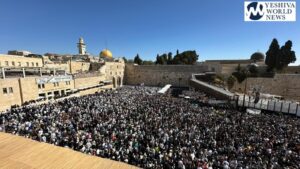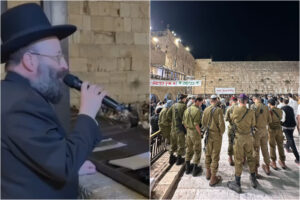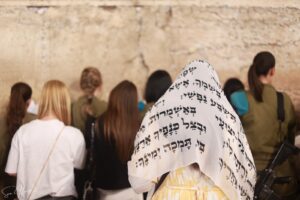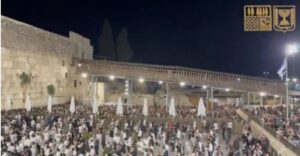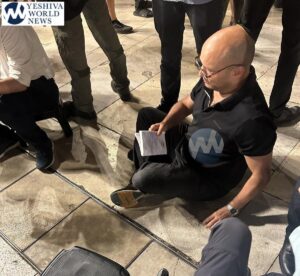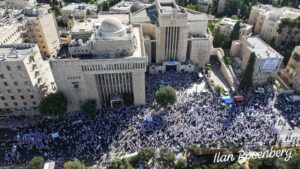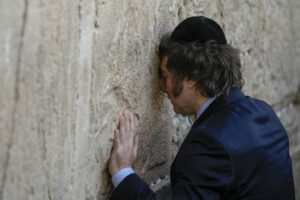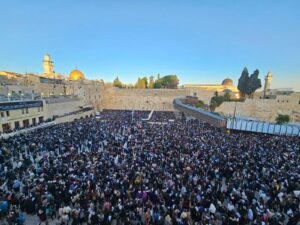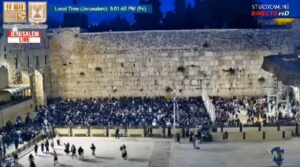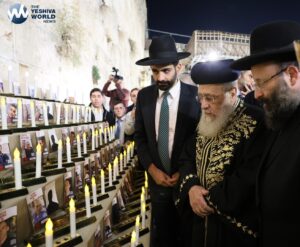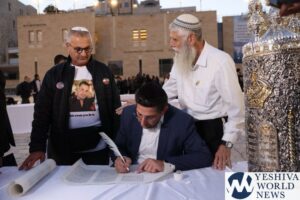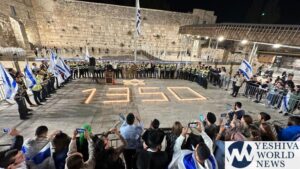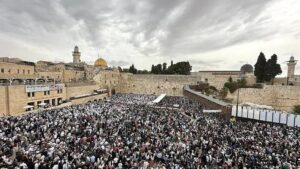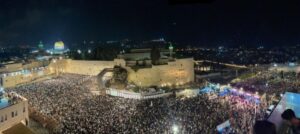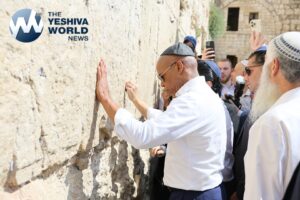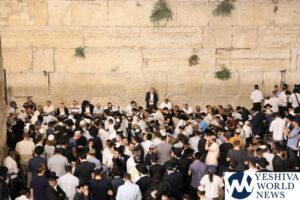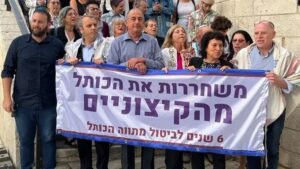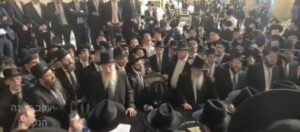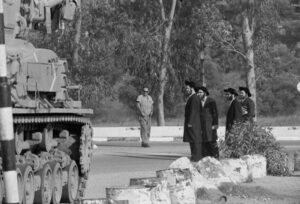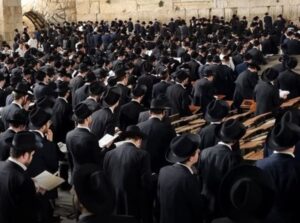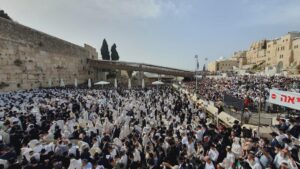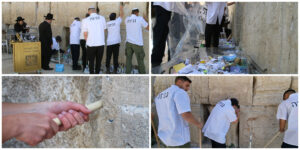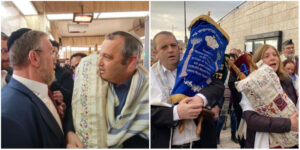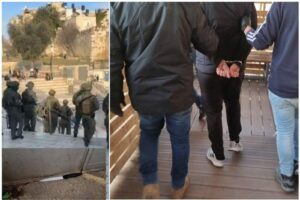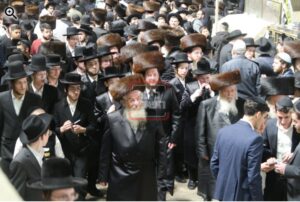
The Karliner at the Kosel
by Rabbi Yair Hoffman A couple of weeks ago, the Rebbe of Karlin was at the Kosel with thousands of his Chassidim. He davened there in heartfelt prayer for an hour. I remember my mother aleha hashalom vividly recalling the Six Day War, where it was her, my uncle, my sister and me in a bomb shelter in Yerushalayim. She would convey such depth of feeling. Join me for a moment. Picture yourself standing there in 1967, your heart pounding as history unfolds before your eyes. After two thousand years of exile, tears, and prayers whispered in foreign lands, the Temple Mount returned to Jewish hands. In those moments of divine intervention, miracles blazed across Jerusalem like shooting stars. A bomb fell on the Mirrer Yeshiva – and by Hashem’s grace, remained silent. But the greatest miracle of all was the return of our beloved Kosel, our precious Wall, which for nineteen agonizing years had been forbidden to us, its stones yearning for our touch just as we yearned to press our foreheads against its ancient surface. Imagine – the Temple Mount, the beating heart of creation itself, where heaven and earth kiss, where the very air vibrates with divine energy. The Kosel stands as our last physical link to that ineffable holiness, its worn stones having absorbed millions of tears throughout the centuries. They call it the “Wailing Wall,” but oh, how much more it is than that – it is our witness, our confidant, our eternal guardian. Each year, on the 28th of Iyar, we celebrate Yom Yerushalayim, but do we truly grasp the magnitude of what was restored to us? Consider this breathtaking truth: According to the Emek HaMelech, the prayers whispered against these stones by Jerusalem’s righteous souls are what sustains our very world. Their tears, their supplications, their deepest hopes pressed into these ancient stones – this is what keeps our universe from crumbling. Every stone, every crevice holds within it the power of survival, of continuance, of hope. The Midrash reveals to us a secret that should make our souls tremble: the Shechina, Hashem’s Divine Presence, has never left the Western Wall. Never. Through exile, through destruction, through centuries of darkness, that holy light has remained, waiting, watching, protecting. The Alshich teaches us that this continuous presence is Hashem’s promise made tangible – a divine guarantee of our ultimate redemption. Yet this place of transcendent hope is also one of profound mourning. When we approach and see it for the first time, we perform Kriyah – rending our garments near our hearts, a physical expression of our soul’s anguish. This tear is left forever imperfect, never to be fully repaired, just as our hearts remain incomplete without the Temple. The Mishna Brurah tells us that upon first seeing Jerusalem in its current state, we should abstain from meat and wine – for how can we feast when our spiritual home lies in ruins? With sovereignty comes sacred responsibility. The holiness of this place demands our vigilance, our respect, our unwavering commitment to its sanctity. The ancient Greeks knew this – an archaeological discovery reveals their warning inscription, forbidding entry to the inner sanctum. Even today, this obligation burns bright, calling us to preserve and protect. When we pray at the Kosel, we must remember

